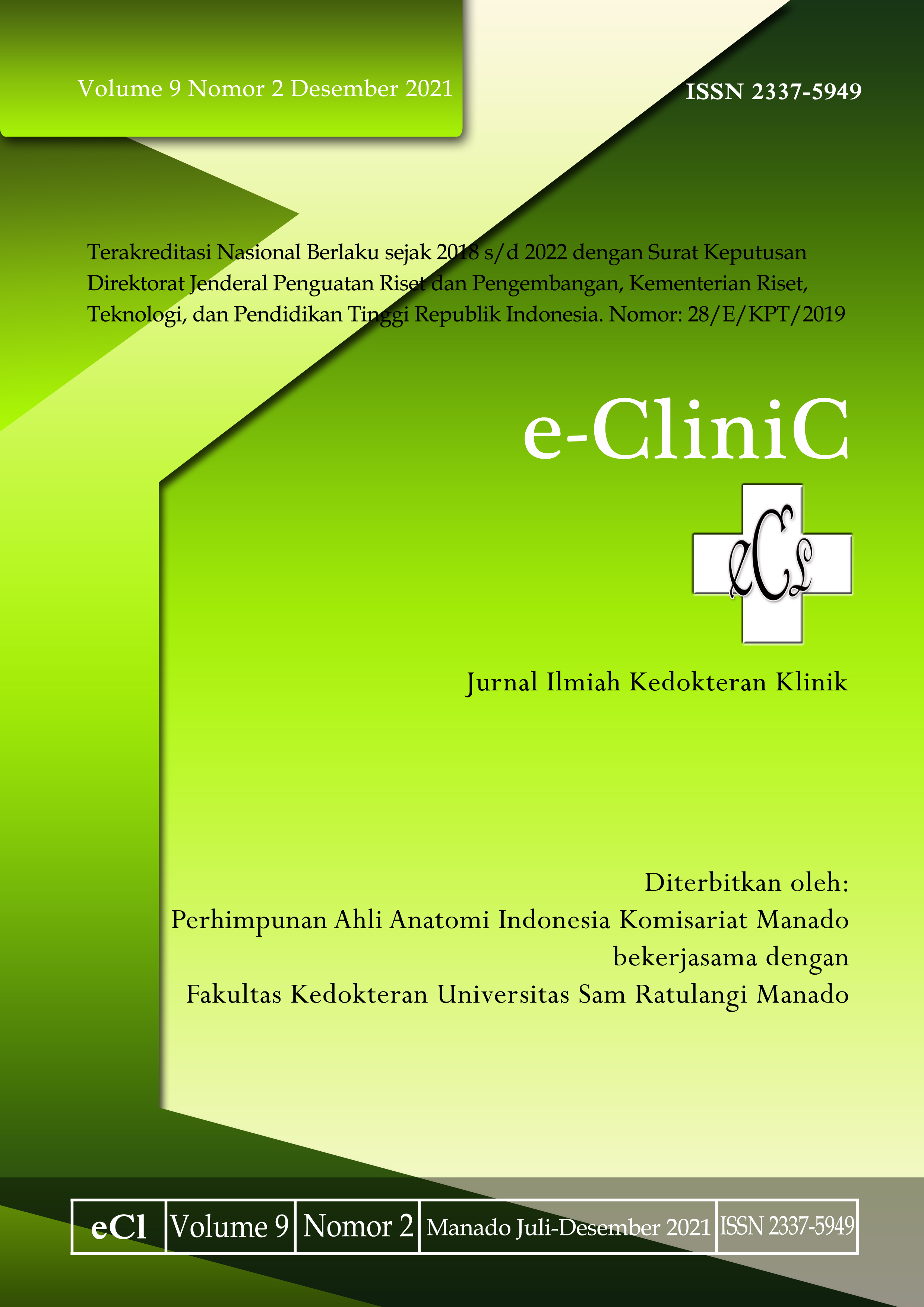Nilotinib as the First Line Therapy in Managing Chronic Myelogenous Leukemia
DOI:
https://doi.org/10.35790/ecl.v9i2.32699Abstract
Abstrak: Leukemia mieloid kronis (chronic myeloid leukemia/CML) adalah penyakit klonal dari sel induk hematopoietik, secara sitogenetik ditandai dengan adanya kromosom Philadelphia (t[9,22][q34;q11]), yang merupakan fusi BCR-ABL1 onkogen. Nilotinib, generasi kedua inhibitor kinase tirosin, merupakan turunan aminopirimidin yang menghambat aktivitas kinase tirosin protein BCR-ABL. Dengan aktivitas penghambatan yang 10-60 kali lebih besar daripada imatinib, pada terapi lini pertama standar untuk CML, nilotinib efektif untuk CML fase kronik dan akselerasi yang resisten terhadap imatinib, namun terapi kombinasi nilotinib dengan agen lainnya masih diperlukan untuk pasien dengan CML krisis blas. Nilotinib aktif terhadap beberapa mutan BCR-ABL yang resisten terhadap imatinib, kecuali mutan T315I. Mutasi spesifik E255K/V, Y253H/F, F359C/V, dan L248V umumnya kurang sensitif terhadap nilotinib. Sebagai terapi lini pertama pada pasien CML fase kronik dengan Ph+ yang baru terdiagnosis, nilotinib menunjukkan CCyR dan MMR yang lebih tinggi serta pengembangan menjadi fase akselerasi/krisis blas serta resiko kematian yang lebih rendah, bila dibandingkan dengan imatinib. Simpulan penelitian ini ialah nilotinib lebih unggul dibandingkan dengan imatinib sebagai terapi lini pertama pada pasien CML fase kronik dengan Ph+ yang baru terdiagnosis,
Kata kunci: chronic myeloid leukemia (CML), nilotinib, imatinib, terapi lini pertama
 Â
Abstract: Chronic myeloid leukemia (CML) is a clonal disease of the hematopoietic stem cells, cytogenetically characterized by Philadelphia chromosome (t[9,22][q34;q11]) leading to the fusion of BCR-ABL1 oncogene. Nilotinib, the second-generation tyrosine kinase inhibitor (TKI), is an aminopyrimidine derivative that inhibits the tyrosine kinase activity of the chimeric protein BCR-ABL. Its inhibitory activity is 10-60 times that of imatinib, therefore, as the standard first-line therapy for CML, nilotinib is effective in the case of CML-CP and CML-AP with imatinib resistant or intolerant. Albeit, novel approaches with nilotinib-based combinations are required for patients in CML-BP. Nilotinib is active against several imatinib-resistant BCR-ABL mutants with the exception of T315I. Specific mutations that are less sensitive to nilotinib include E255K/V, Y253H/F, F359C/V, and L248V. As the first-line therapy of patients with newly diagnosed Ph+ CML-CP, nilotinib has higher rates of CCyR and MMR, lower rates of progression to AP or BC, and lower risk of CML related death when compared with imatinib. In conclusion, nilotinib is superior to imatinib as the the first-line therapeutic option in newly diagnosed Ph+ CML-CP patients.
Keywords: chronic myeloid leukemia (CML), nilotinib, imatinib, first line therapy
Downloads
Published
How to Cite
Issue
Section
License
COPYRIGHT
Authors who publish with this journal agree to the following terms:
Authors hold their copyright and grant this journal the privilege of first publication, with the work simultaneously licensed under a Creative Commons Attribution License that permits others to impart the work with an acknowledgment of the work's origin and initial publication by this journal.
Authors can enter into separate or additional contractual arrangements for the non-exclusive distribution of the journal's published version of the work (for example, post it to an institutional repository or publish it in a book), with an acknowledgment of its underlying publication in this journal.
Authors are permitted and encouraged to post their work online (for example, in institutional repositories or on their website) as it can lead to productive exchanges, as well as earlier and greater citation of the published work (See The Effect of Open Access).







